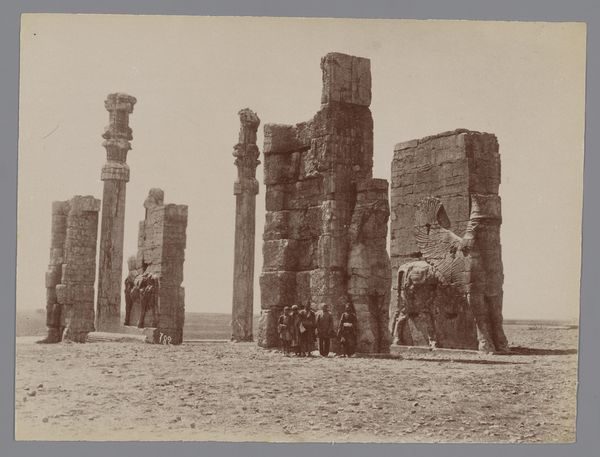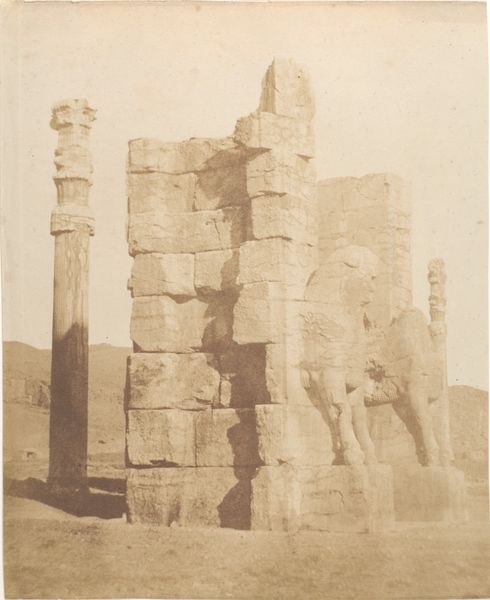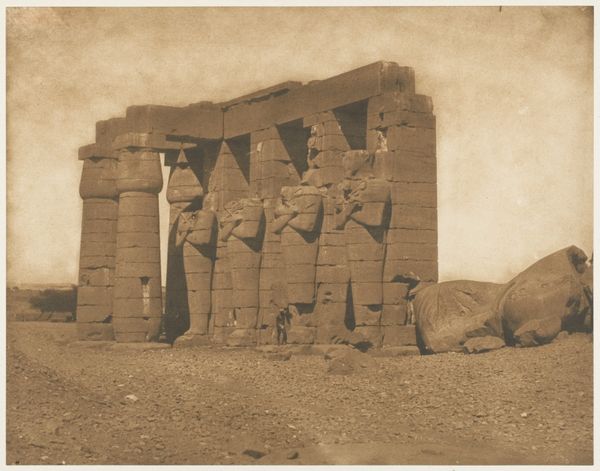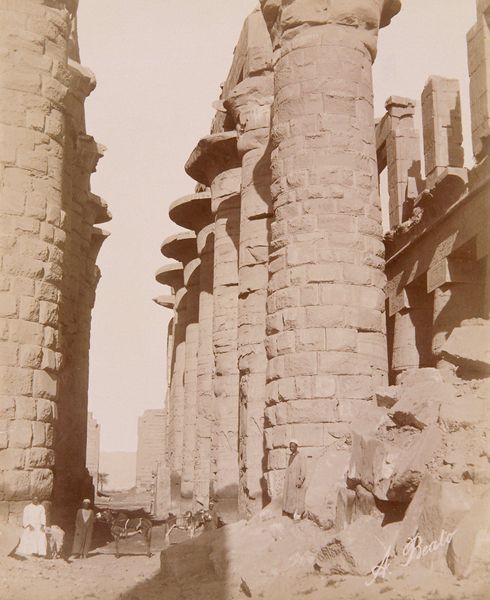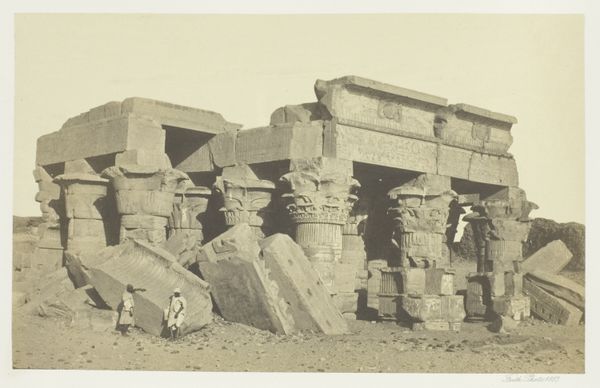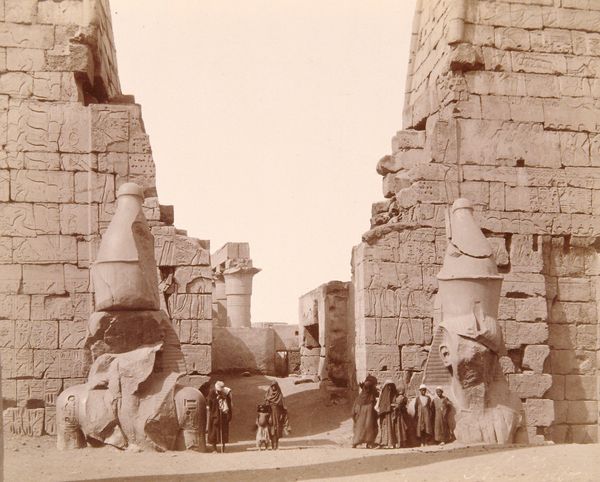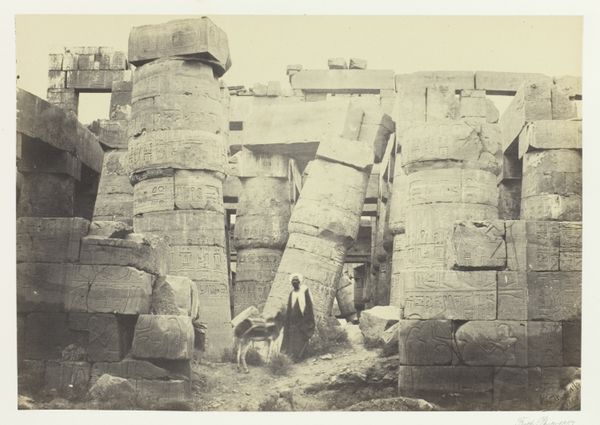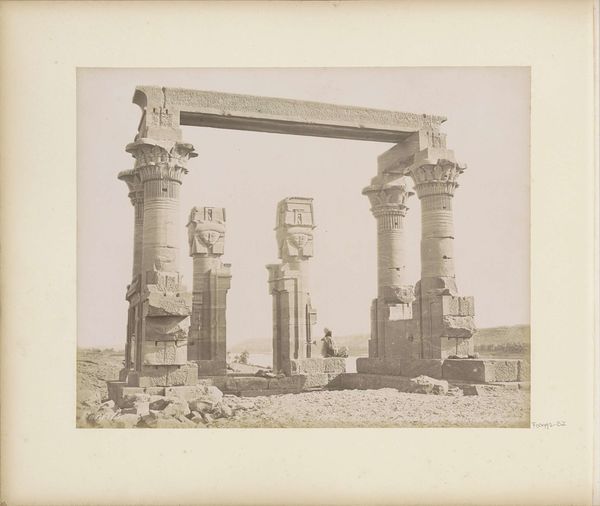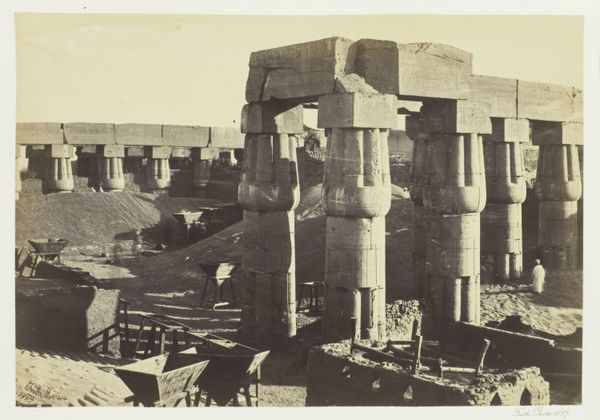![(15) [Gate of all Nations, Persepolis, Fars] by Luigi Pesce](/_next/image?url=https%3A%2F%2Fd2w8kbdekdi1gv.cloudfront.net%2FeyJidWNrZXQiOiAiYXJ0ZXJhLWltYWdlcy1idWNrZXQiLCAia2V5IjogImFydHdvcmtzLzhkZTQ0ODU2LTIxMjAtNGJmZS1iN2VlLTBhYzRhMGNlMWQ0YS84ZGU0NDg1Ni0yMTIwLTRiZmUtYjdlZS0wYWM0YTBjZTFkNGFfZnVsbC5qcGciLCAiZWRpdHMiOiB7InJlc2l6ZSI6IHsid2lkdGgiOiAxOTIwLCAiaGVpZ2h0IjogMTkyMCwgImZpdCI6ICJpbnNpZGUifX19&w=3840&q=75)
(15) [Gate of all Nations, Persepolis, Fars] 1840 - 1869
0:00
0:00
print, photography, architecture
# print
#
landscape
#
photography
#
ancient-mediterranean
#
orientalism
#
architecture
Copyright: Public Domain
Editor: This photograph by Luigi Pesce, taken sometime between 1840 and 1869, depicts the Gate of All Nations at Persepolis. The sepia tone and the ruinous state of the architecture create a strong sense of faded grandeur. What can you tell me about the significance of this gate and the figures that adorn it? Curator: These winged bull figures, called Lamassu, are powerfully evocative. Think about their hybridity – the body of a bull, the wings of an eagle, and the head of a human. What do you think such a composite creature might represent to the ancient Persians? Editor: Power, certainly! But also maybe wisdom? The human head makes me think of intellect and awareness. Curator: Precisely. These figures served as guardians, symbols of protection, and potent reminders of royal authority. The gate itself, imagine it not as ruins, but as it stood originally – a threshold between worlds, controlled and sanctioned by the Persian King. Photography like this played a huge role in shaping European perceptions of the “Orient,” but the careful compositions of the photographers could serve a propagandistic role too. What feelings does this image evoke in you? Editor: I feel a mix of awe and sadness. Awe at the scale and artistry, but sadness for what's been lost, like a reminder of the transient nature of empires and cultures. Curator: And isn't it fascinating how the photograph itself, now aged and sepia-toned, mirrors the weathered stones it depicts, becoming another layer in the story of time and memory? We are reminded that photography holds as much cultural weight as these beautiful ancient sculptures. Editor: I hadn't thought of it that way. This makes me consider photography as another cultural relic worthy of study, similar to the architecture itself. Curator: Exactly. The photograph, as an object, tells a story too.
Comments
No comments
Be the first to comment and join the conversation on the ultimate creative platform.
